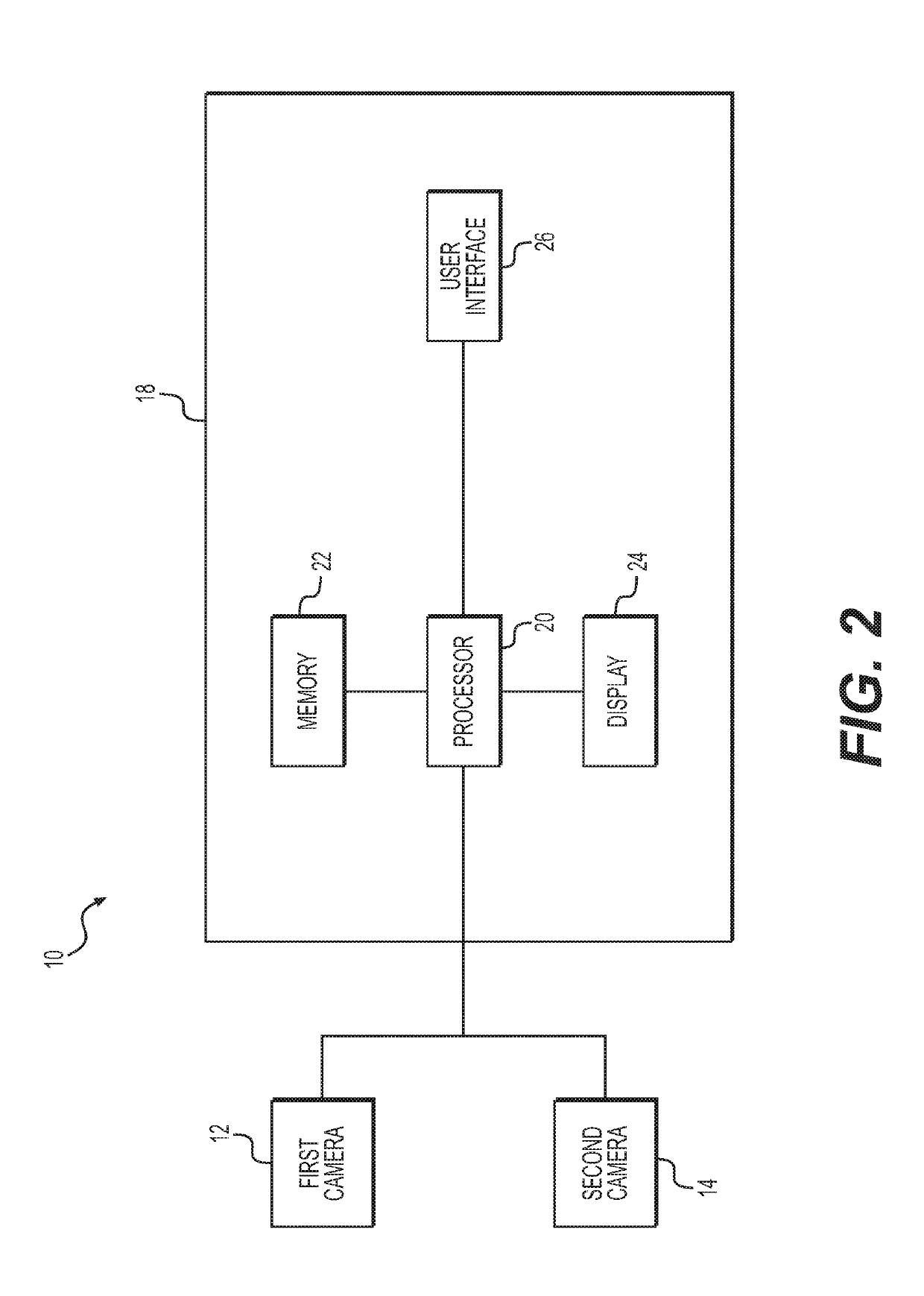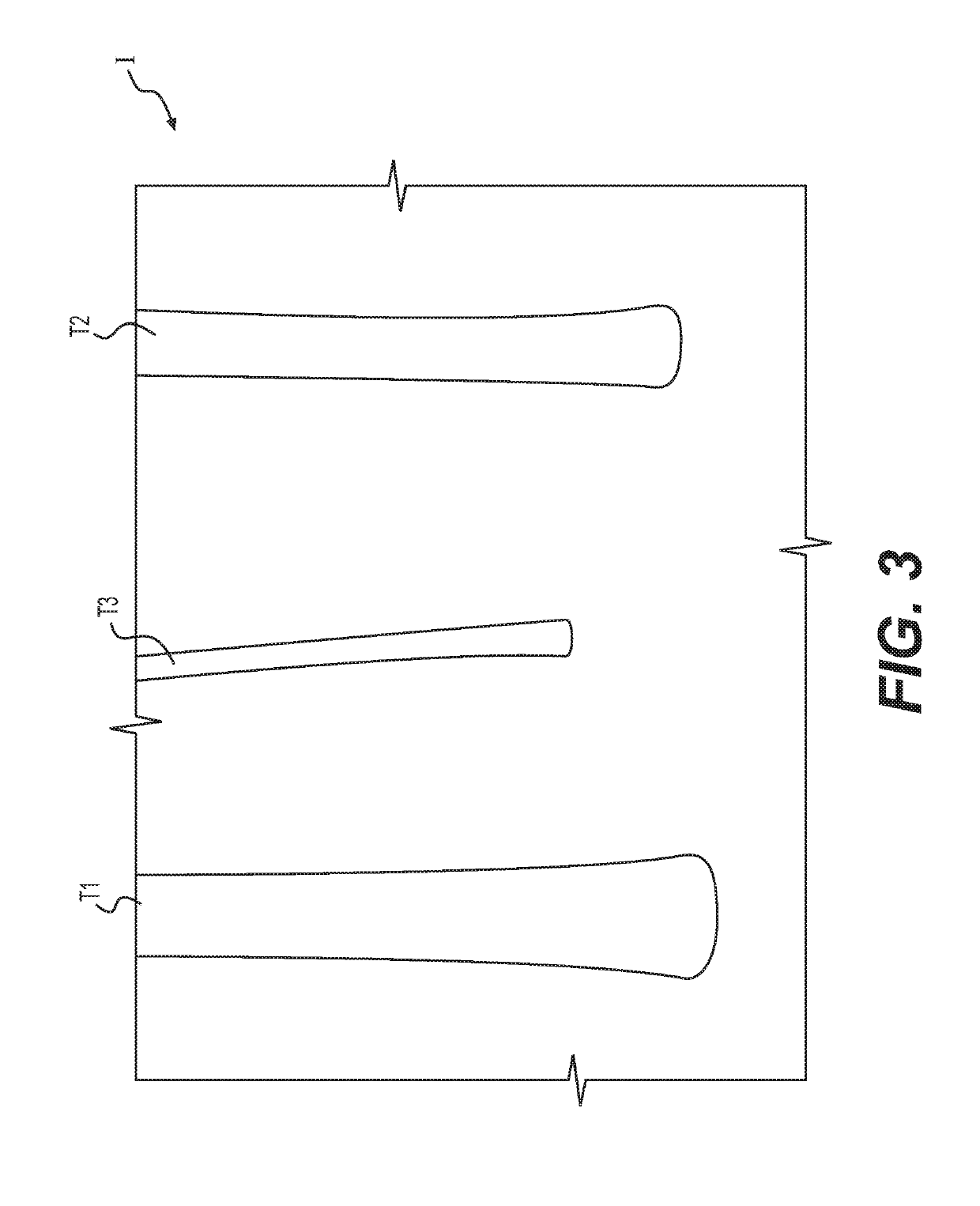Method of performing dendrometry and forest mapping
a dendrometry and forest technology, applied in the field of dendrometry and forest mapping, can solve the problems of large time and computer power consumption, high cost, and high computational difficulty of such artificial intelligence-based tools for automated marking of trees
- Summary
- Abstract
- Description
- Claims
- Application Information
AI Technical Summary
Benefits of technology
Problems solved by technology
Method used
Image
Examples
Embodiment Construction
[0023]The method of performing dendrometry and forest mapping utilizes a stereoscopic camera system 10, coupled with a machine vision system, to determine the diameters at breast height of selected trees in a forest, based solely on calculations performed from recorded digital image data, as well as to generate a map showing the coordinates and calculated diameters of the selected trees in the forest. FIG. 1 illustrates a non-limiting example of such a stereoscopic camera system 10, which includes first and second digital cameras 12, 14, respectively, mounted to a bracket 16. Bracket 16 is adapted for mounting on any desired portable device, such as, for example, a vehicle, a piece of forest harvesting equipment, a handheld camera rig or the like.
[0024]It should be understood that any suitable type of digital cameras, visual sensors or the like may be utilized, and that bracket 16 is shown for exemplary purposes only. Any suitable type of mount may be utilized, dependent upon the pa...
PUM
 Login to View More
Login to View More Abstract
Description
Claims
Application Information
 Login to View More
Login to View More - R&D
- Intellectual Property
- Life Sciences
- Materials
- Tech Scout
- Unparalleled Data Quality
- Higher Quality Content
- 60% Fewer Hallucinations
Browse by: Latest US Patents, China's latest patents, Technical Efficacy Thesaurus, Application Domain, Technology Topic, Popular Technical Reports.
© 2025 PatSnap. All rights reserved.Legal|Privacy policy|Modern Slavery Act Transparency Statement|Sitemap|About US| Contact US: help@patsnap.com



